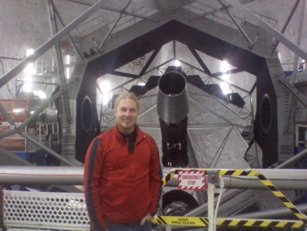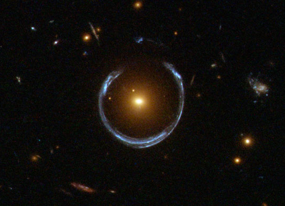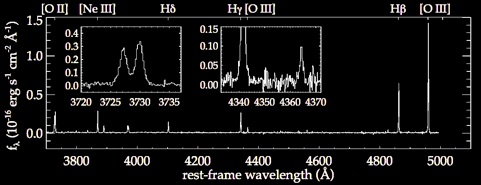Tucker Jones
Assistant Professor of Physics

Tucker Jones
Assistant Professor of Physics

At the 10-meter Keck I telescope
Brief descriptions of some of my ongoing research projects are below.
For (much) more information on my research and results, you can read my refereed scientific publications (link to ADS).
This includes links to free full-text versions of each paper, available on arxiv.org.
Putting the public in publication.
When and how did the first stars and galaxies form? Did galaxies reionize the Universe at early times? How did they evolve into the massive spiral disks and ellipticals seen today? When and where did heavy elements form? My research attempts to address these and many other questions regarding the history of the universe and our tiny place in it.
How do galaxies form and evolve?
Galaxies in the present-day universe such as our own Milky Way consist of symmetric disks and spheroids of stars. Yet in the early universe, we often observe galaxies with clumpy and irregular distributions of young stars and gas. My collaborators and I seek to understand how various physical processes transform the structure of galaxies into the regular morphologies seen today. One possibility is that mergers of multiple galaxies produce a spheroidal bulge, while ongoing star formation at later times gives rise to a disk. Another theory postulates that most stars form in a turbulent disk and migrate into a spheroidal bulge through dynamical instabilities, settling into symmetric structures over time. We test these and other hypotheses by mapping the distribution of stars, gas, internal motion (kinematics), and heavy element abundance in galaxies spanning the past 12 billion years of cosmic history.

Gravitational lensing as an astrophysical tool
Galaxies in the distant universe appear small and faint, which makes them difficult to study. However, in rare cases when galaxies lie directly behind another massive object, they can be magnified by the phenomenon of gravitational lensing. The image at left shows a spectacular example of gravitational lensing where a blue galaxy is magnified into a nearly complete ring by the central reddish-yellow galaxy. The background source appears a factor of 30 times larger and more luminous than it would in the absence of lensing. My collaborators and I have used the lensing magnification effect to study this lensed blue galaxy, and many other examples, with much greater resolution and precision than is normally possible. Much of our progress on the questions below was made possible by observing gravitationally lensed galaxies. The effort to find and characterize these sources is continuing through programs such as CASSOWARY, GLASS, and the Hubble Frontier Fields.
A gravitationally lensed galaxy.
Image credit: ESA/Hubble and NASA
What is the heavy element content of distant galaxies?
All elements heavier than Beryllium are produced by nuclear fusion in stars. Some of these elements are ejected from galaxies in outflows driven by powerful feedback processes. The abundance of heavy elements in a galaxy, or metallicity, therefore records the history of star formation and outflows. Metallicity is extremely difficult to measure for distant galaxies, but we have recently verified that certain strong emission lines can be used to accurately estimate the metallicity as measured from direct methods. Using these strong line techniques, we find that galaxies have lower metallicity at earlier times, indicating significantly higher fractions of unprocessed gas. Furthermore we find a correlation between galaxy mass and metallicity, suggesting that outflows remove a higher fraction of mass from galaxies of lower mass. Extreme mass loss in the smallest systems may help explain the long-standing problem of why dwarf galaxies in the nearby universe have a variety of mass density profiles and lower average densities than theoretical predictions.
Did galaxies reionize the universe?
The cosmic microwave background radiation arose when the universe transitioned from a fully ionized to a fully neutral state, less than a million years after the big bang. Hydrogen in the intergalactic medium then reverted back to being fully ionized within a billion years. When and how this re-ionization occurred is not fully known. Star forming galaxies are a leading candidate for the cause of reionization, but it is not clear whether enough of their ionizing photons were able to escape into the intergalactic medium. Alternatively reionization may have been driven by accreting black holes, decaying dark matter particles, or other exotic possibilities. We are studying the spectroscopic properties of young stars and the interstellar medium in galaxies near the epoch of reionization to determine whether the production and escape of ionizing photons was sufficient to maintain the observed levels of reionization, or if other sources were responsible. We have found that the interstellar medium of galaxies is typically more conducive to the escape of ionizing photons at earlier times, in agreement with expectations if galaxies were indeed the cause of reionization.

Spectrum of a galaxy seen approximately 7 billion years ago. Prominent emission lines are used to derive the relative abundances of oxygen, neon, and hydrogen.